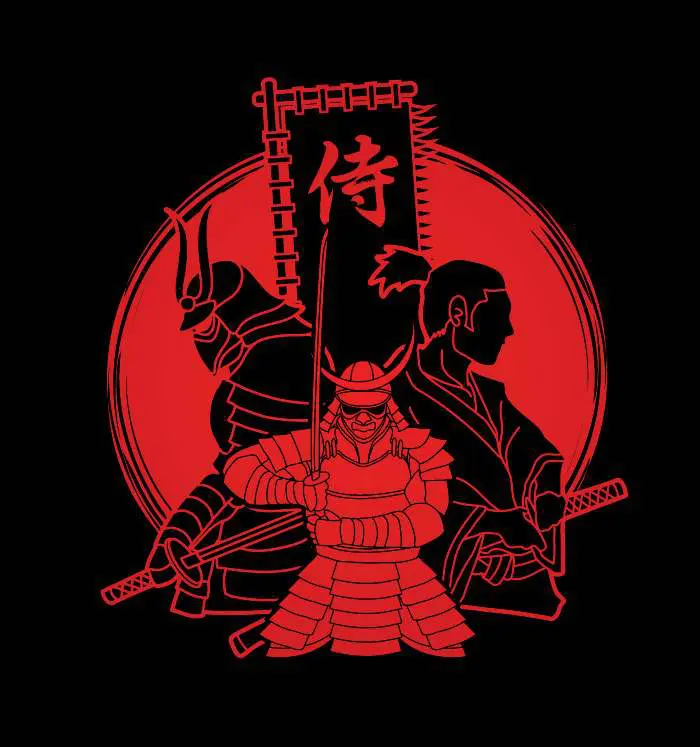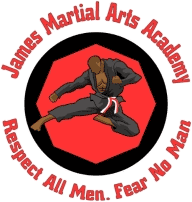The History And Origins Of Karate

Karate is a martial art that has been practiced for centuries and holds a significant place in Japanese culture. The history and origins of this art form are fascinating and offer insight into its development over the years.
We will explore the evolution of Karate in this article, from its humble beginnings to its present-day popularity worldwide.
The word ‘karate’ means ’empty hand’ in Japanese, which indicates that it is a form of self-defense that does not require weapons. It originated on the island of Okinawa, which was part of the Ryukyu Kingdom until 1879 when it became part of Japan.
The history of karate was born out of necessity, as the Okinawans were forbidden from carrying weapons under the rule of their Japanese overlords. As a result, they developed a system of hand-to-hand combat that relied on quick movements and strikes to disable opponents quickly and effectively.
Over time, Karate evolved into a more sophisticated martial art with various styles and techniques that continue to be taught and practiced around the world today.
The Ryukyu Kingdom And The Birth Of Karate
Karate is a martial art training that originated in the Ryukyu Kingdom, an independent kingdom that existed from the 15th to the 19th centuries.
The Ryukyu Kingdom was located on islands between Japan and Taiwan, with its capital city in what is now Okinawa, Japan.
This kingdom’s people developed their unique fighting style, which eventually became known as Karate.
Karate was originally developed as a means of self-defense for the people of the Ryukyu Kingdom, who were often under attack from pirates and other invaders.
Over time, Karate evolved into a popular form of physical exercise and mental discipline.
Today, it is practiced worldwide by millions who appreciate its many benefits, including improved strength, flexibility, balance, focus, and self-confidence.
Chinese Influence And The Evolution Of Karate
Now that we’ve explored the roots of Karate, let’s take a closer look at how it evolved.
Chinese influence played a significant role in shaping the martial art into what it is today. During the 14th century, Okinawa had strong ties with China and regularly traded with them. It’s believed that Chinese martial arts, such as kung fu, were introduced to Okinawa during this time.
As Karate began to develop, it incorporated elements from these Chinese martial arts. For example, many of the movements and techniques used in Karate can be traced back to kung fu.
Additionally, Chinese philosophy and culture influenced the development of Karate. Concepts such as chi (life energy) and yin-yang (the balance of opposing forces) became integral parts of karate practice. Over time, Karate continued to evolve as practitioners added their own innovations and adaptations to the art form.
The Emergence Of Different Karate Styles
As Karate spread across Japan and other parts of the world, different styles emerged. These styles were influenced by various factors, such as the founder’s personal experiences, geographical location, and cultural influences.
Some of the most well-known karate styles include Shotokan karate, Goju-Ryu, and Shito-Ryu. Shotokan was founded by Gichin Funakoshi in the early 1900s and is characterized by its solid stances and linear movements of Japanese karate.
On the other hand, Goju-Ryu was founded by Chojun Miyagi in Okinawa and emphasizes circular movements and breathing techniques. Lastly, Shito-Ryu was founded by Kenwa Mabuni in the 1930s and combines elements from both Shotokan and Goju-Ryu.
Today, numerous other karate styles have evolved, each with unique training methods, forms (katas), and philosophies.
Basic Techniques In Karate
Are you ready to learn some basic techniques in Karate?
This martial art is not just about throwing punches and kicks. It’s a way of life that teaches discipline, respect, and self-defense.
By mastering the basic techniques, you’ll be on your way to becoming a confident and skilled karateka.
First up are the strikes, such as the punch and the knife-hand strike. These require proper alignment of the body, from stance to arm extension.
Then there are the kicks, like the front kick and roundhouse kick, which require balance and flexibility. Remember blocks to defend against attacks!
With practice and repetition, your body will become attuned to these movements, allowing you to execute them with speed and precision. Remember: practice makes perfect!
Advanced Techniques And Weapons
Now that we have covered the origins and history of Karate let’s dive into advanced techniques and weapons used in this martial art.
Karate is known for its powerful strikes and kicks at vulnerable body areas. Advanced practitioners can execute these techniques with precision and speed, making them formidable opponents.
In addition to hand-to-hand combat, Karate also involves the use of weapons. Some common weapons used in Karate include nunchaku, bo staff, and sai. These weapons require a great deal of skill and practice to master, but they can provide an advantage in combat situations.
It is important to note that while these weapons are used in training and competition, they should only be used in those contexts with proper training and supervision.
Karate Today: Sport, Self-Defense, And Philosophy
Nowadays, Karate is no longer just a form of self-defense. It has become a popular sport that people of all ages and backgrounds practice. Karate competitions are held worldwide, and athletes train rigorously to compete at the highest level.
Beyond its physical aspect, Karate practitioners also encompasses a philosophy that emphasizes respect, discipline, and self-improvement. Practitioners are encouraged to strive for personal growth both on and off the mat. This holistic approach has made Karate a popular choice for those seeking not only to learn how to defend themselves but also to improve their overall well-being.
In today’s society, where stress and anxiety are prevalent, Karate provides an outlet for individuals to relieve tension and find balance in their lives. Therefore, this ancient martial art continues to evolve with time while maintaining its core values and principles intact.
Martial Arts Training
Martial arts training is a dynamic and disciplined practice that encompasses a wide range of combat techniques and physical conditioning. It is an art form that originated in ancient times and continues to thrive in various forms around the world today. Martial arts training goes beyond the development of self-defense skills; it promotes mental and physical well-being, instills discipline, and cultivates a strong sense of self-confidence. Whether it’s the popular style of striking techniques of karate, Shotokan karate and taekwondo, the grappling and submission holds of Brazilian Jiu-Jitsu, or the flowing movements of kung fu, martial arts training offers a holistic approach to personal growth and mastery.
Conclusion of Martial Arts History
As a caregiver, I have seen the positive impact that Karate can have on individuals of all ages and abilities. Whether through physical fitness or mental focus, Karate has been practiced for centuries and continues to be a popular martial art worldwide.
The color of a karate uniform, the time it takes to earn a black belt, and the celebrities who practice Karate are all interesting aspects of this ancient art form. However, what truly makes Karate unique is its ability to bring people together and improve their overall well-being.
No matter who you are or where you come from, practicing Karate can help you feel more confident, focused, and connected to those around you. As a caregiver, I encourage everyone to try out this fantastic martial art and see how it can positively impact their lives.
FAQ
Karate Uniform?
Do you know the significance of the color of a karate uniform?
It holds great importance in the world of martial arts. The color of a karate uniform, also known as a gi, can indicate a practitioner’s level of expertise and rank.
Typically, white uniforms are worn by beginners, while black uniforms are reserved for more experienced practitioners. Other colors, such as blue and red, may be used for competition purposes or to signify specific achievements within a particular style or school.
The color of a karate uniform is a visual representation of one’s dedication and progress in their training, making it an essential aspect of the martial arts tradition.
If you’re considering taking Karate, you might wonder how long it typically takes to earn a black belt.
Well, the answer can vary depending on several factors, such as the style of Karate and the frequency of training. Generally speaking, it takes several years to achieve this rank with consistent practice and dedication.
It’s essential to remember that earning a black belt is not just about mastering physical techniques but also demonstrating discipline, respect, and humility – qualities that are integral to the philosophy of Karate.
So if you’re considering pursuing this goal, be prepared for a challenging but rewarding journey
Are there any celebrities who are also skilled in Karate?
Well, there sure are!
Many well-known actors and performers have studied the martial art of Karate and become proficient at it.
For example, Chuck Norris is a renowned martial artist and actor who holds black belts in multiple styles, including Tang Soo Do and Brazilian Jiu Jitsu.
Another famous name is Bruce Lee, who not only studied Karate but also developed his own martial arts style called Jeet Kune Do.
Even Will Smith has been known to incorporate elements of Karate into his training regimen for various action movie roles.
It’s fascinating to see how these individuals have used their passion for Karate to enhance their craft in the entertainment industry.
Can Karate be practiced by people of all ages and physical abilities? Absolutely!
Karate is a martial art that can be tailored to fit the needs of anyone, regardless of age or physical ability. Many martial arts schools offer specialized classes for children, seniors, and those with disabilities.
The key is to find an instructor who understands your unique needs and can work with you to develop a training plan that is safe and effective.
Whether you want to improve your fitness, learn self-defense skills, or try something new, Karate is an excellent option for people of all ages and abilities.
So why not give it a try? You might surprise yourself with what you’re capable of!
Meditation and mental focus are essential components of karate practice, regardless of age or physical ability.
While physical strength and agility are undoubtedly crucial in this martial art, the mind plays an equally significant role.
By clearing the mind of distractions and focusing on the task at hand, practitioners can achieve greater awareness of their surroundings and better anticipate their opponent’s moves.
This mental discipline is also a powerful tool for stress management, helping individuals cultivate inner peace and resilience in the face of life’s challenges.
Whether you’re a seasoned black belt or a beginner just starting, incorporating meditation and mental focus into your karate training can help you achieve tremendous success in every aspect of your life.
